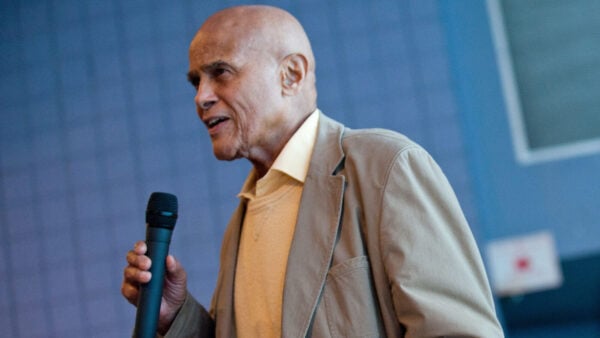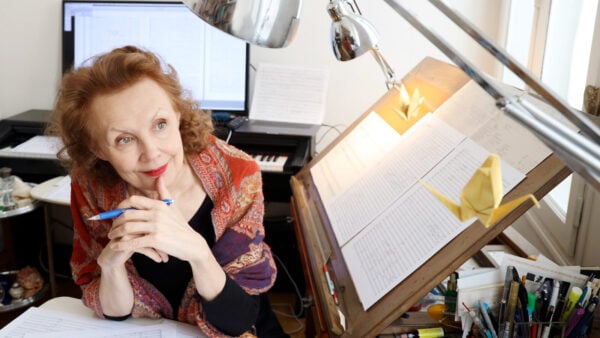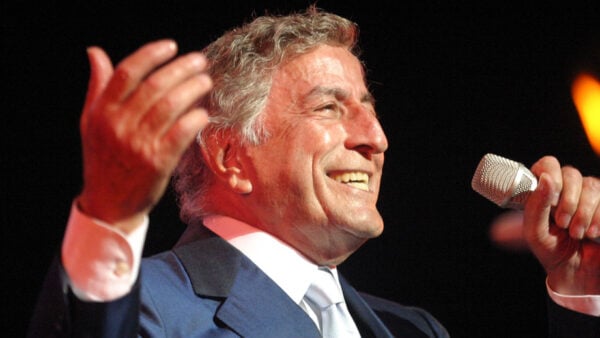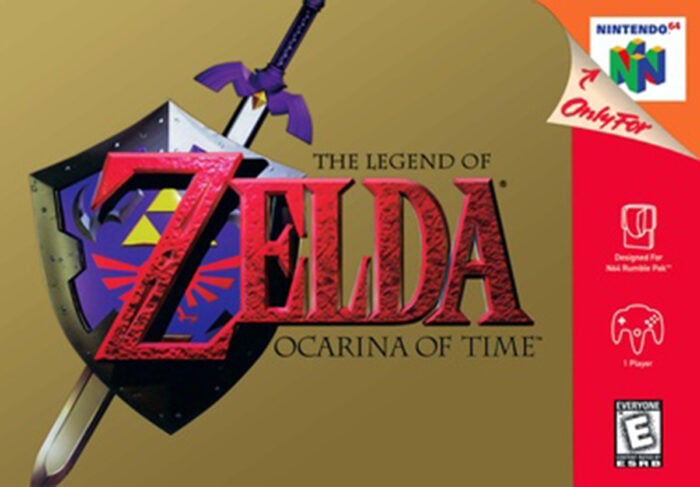
Cover art for The Legend of Zelda: Ocarina of Time
When The Legend of Zelda: Ocarina of Time was released on November 23, 1998, the game’s groundbreaking 3D graphics and creative in-game challenges had folks everywhere scrambling to get their hands on a copy. Not only did it become one of the most popular games in the Legend of Zelda series, it is also known today as one of the most popular video games ever, with 500,000 pre-orders and 7.6 million copies sold worldwide.
One of Ocarina of Time’s most memorable aspects was its titular instrument: a little clay flute called the ocarina. Players had to recreate songs on this instrument in order to proceed through the game and were also able to create their own melodies. This unique feature quickly translated to a real-life interest. One instrument maker, Songbird Ocarinas, says that “the demand for ocarinas expanded exponentially” after the game was released.
On the 25th anniversary of this legendary game, let’s take a closer look at the ocarina, how it works, and its surprising history in classical music!
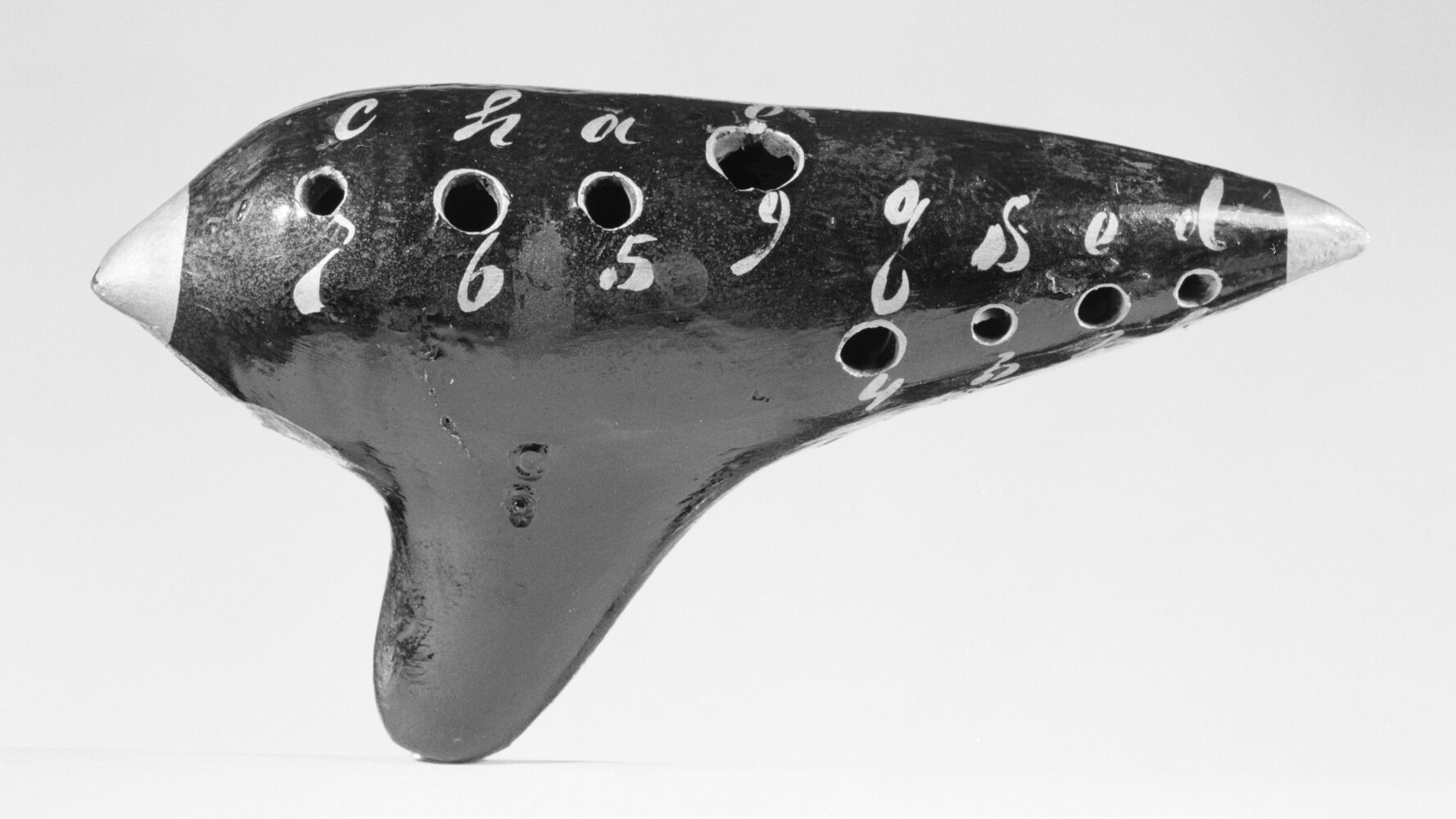
An ocarina, Austrian, early 20th century, via Met Museum
First, a little background: ocarinas belong to an ancient family of woodwind instruments that date back thousands of years. Ocarina-like instruments (also known as vessel flutes) have been found in archeological sites of ancient civilizations all over the world.
However, the modern ocarina has a specific origin. In 1853, Giuseppe Donati invented the 10 hole clay flute that is the basis for most ocarinas today. Due to the instrument’s oval shape and little neck, he nicknamed the creation an ocarina, meaning ‘little goose’ in Italian. The term has stuck, and “ocarina” is now used as an umbrella term for vessel flutes all over the world.
To learn more, we caught up with Chicago composer and wind player Michael Barrera. In between writing for various wind ensembles, performing in Chicago, and trying to record all of Holst’s The Planets for Flute Orchestra, Barrera has also recently finished arrangements for ocarina ensemble Shooting Star Ensemble.
WFMT: When did you first hear about the ocarina? What drew you to want to learn how to play it?
Michael Barrera: I believe it was Ocarina of Time. As a kid, I enjoyed using the ocarina in-game just to mess around. My favorite part about it was the sound… so delicate and pure. After studying the flute for a number of years, I decided that I would like to try one for myself, so I bought a nice ceramic instrument. I am by no means a professional at it, but I can get by.

Michael Barrera (Photo: Morna Freitas Photography)
WFMT: How does the ocarina differ from woodwind instruments that are traditionally found in classical music?
Barrera: The ocarina is actually similar to most modern wind instruments: you blow into the airway at the top, and a hole and edge in the back splits this airstream. There are two prominent types of ocarinas: transverse and pendant. The instrument depicted in Ocarina of Time is a transverse or sweet potato ocarina. It has ten to twelve holes and is held off to the side, with fingerings that are mostly linear.
Where the ocarina starts to differ is in its fairly strict breath requirements. Typically, a wind player will use more air when they want to play a louder dynamic; with the ocarina, using more air affects the pitch dramatically. Players use alternate fingerings or partially shade holes to keep the pitch in tune, but it can still limit dynamics.
Another common trait of ocarina playing is ornamentation. Vibrato is done using your breath for a quick fluctuation of pitch. Players use their breath to bend the pitch like a singer, or add little flourishes to the melody for character and color, similar to the tin whistle traditionally used in Irish folk music.
WFMT: What inspired your piece Tailwind, and why did you decide to write it for the Ocarina Octet?
Barrera: Tim Chernobrov (from Shooting Star Ocarina) had approached me and asked for a piece to be commissioned for the full octet of instruments. Shooting Star Ocarina had at the time just acquired their lowest member, the contrabass in G, and were able to extend the standard Italian-style ocarina septet. Tailwind was originally inspired by some of the flute quartet music I had studied before, but quickly took on its own flair during the writing process, starting to be reminiscent of the fleeting nature of wind.
What was so fascinating about writing for this group was the limitations of working with the instruments. The limited range allows for each instrument to be in its own harmonic space, but also overlap enough for melodic lines to be passed from one instrument to the next. Dynamics were taken care of by the arrangement and texture of the piece. When the full forces play, you get the full and rich sound of the ensemble; thinning out the arrangement brings the overall volume down. This play between the different sections is what allows ocarina music to be so captivating to listeners.
WFMT: What are a few ocarina-centric pieces that you could recommend for folks who want to hear more?
Barrera: That’s a tricky one. There is a decent catalog of music written for ocarina septet; one of the more well-known composers being Alfredo Barattoni, although modern recordings are rare. Today, folk songs such as Irish traditionals fit well on the ocarina and are some of the more common pieces that are played.
One of my favorites is a popular group named Ocabanda. Many of their members share a love of video game music and create their own arrangements. Two of their members I follow, David Erick Ramos and Jordan Moore, post to YouTube demonstrating many different styles of ocarina playing.
I also had the pleasure of working with Shooting Star Ocarina again recently. They performed another arrangement of mine for “Oca-tober”: an arrangement of "I love my Love" by Gustav Holst. It is another good example of how using more and less ocarinas changes texture, timbre, and dynamics, and how the solo lines are often ornamented for expressive purposes.
Listen to more of Michael Barrera’s music at michaelbarreraflute.com. This interview has been edited for length and clarity. Not all works available on Apple Music

